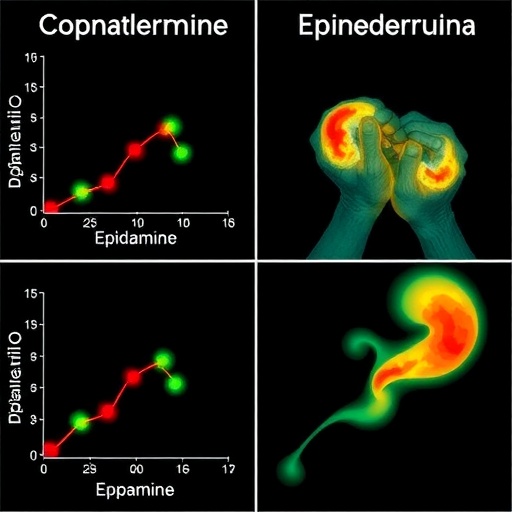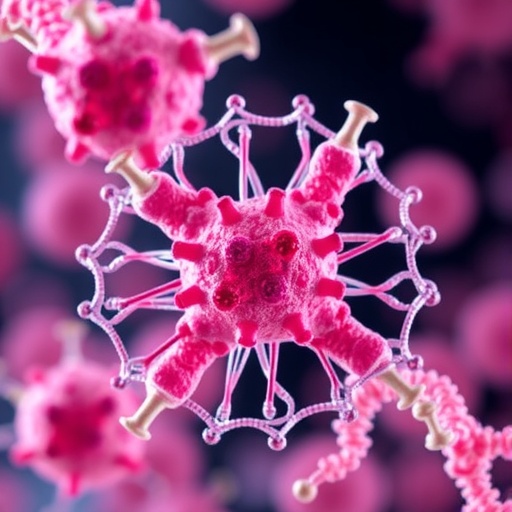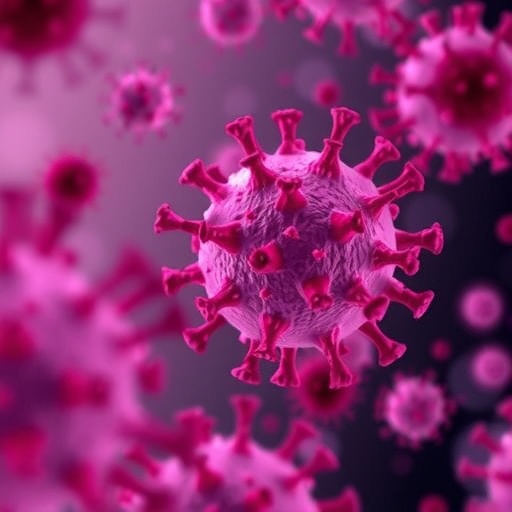
In the high-stakes world of neonatal intensive care, septic shock remains one of the most formidable challenges clinicians face. This severe, life-threatening condition arises when infection triggers a cascade of systemic inflammation, leading to cardiovascular collapse and multi-organ dysfunction in newborns. Despite advances in medical technology and critical care, septic shock in neonates continues to be a leading cause of mortality worldwide. The search for the most effective therapeutic interventions is thus a pressing priority, with a particular focus on optimizing pharmacologic support for the fragile cardiovascular systems of these youngest patients.
Among the arsenal of medications used to stabilize neonates in septic shock, two catecholamines stand out for their widespread application and therapeutic promise: dopamine and epinephrine. Both agents act on adrenergic receptors to improve cardiac output and systemic vascular resistance, aiming to reverse the profound hypotension and impaired tissue perfusion characteristic of septic shock. However, the neonatal physiology—markedly distinct from that of adults and older children—complicates extrapolation of treatment guidelines, leading to ongoing debate about which drug should be the first-line agent after fluid resuscitation fails.
A recent landmark open-labeled, randomized controlled trial, conducted by Singh et al. and published in the Journal of Perinatology, sheds new light on this contentious clinical decision. The study meticulously compared the efficacy and safety profiles of dopamine versus epinephrine in neonates suffering from fluid-refractory septic shock. This research addresses a critical knowledge gap by focusing exclusively on the neonatal population, where evidence has been historically limited and fragmented.
The trial enrolled neonates diagnosed with septic shock unresponsive to adequate fluid resuscitation—a scenario requiring urgent vasoactive support. Patients were randomized to receive either dopamine or epinephrine as the first-line inotropic agent. The primary endpoints included short-term shock resolution, improvement in hemodynamic parameters, and survival rates, while secondary outcomes assessed adverse effects and long-term developmental progress. By employing rigorous randomization and open-label design, the investigators ensured both practical relevance and methodological robustness.
Physiologically, dopamine and epinephrine differ in their receptor affinity and resultant hemodynamic effects. Dopamine, acting dose-dependently on dopamine-1, beta-1, and alpha-1 receptors, can enhance renal perfusion and cardiac output at lower doses but may cause vasoconstriction at higher doses. Epinephrine, a potent alpha and beta agonist, exerts more pronounced chronotropic and inotropic effects alongside vasoconstriction, potentially reversing shock more swiftly but with a risk of increased metabolic demands. Unpacking these nuances in the fragile neonatal context is crucial, as premature infants have developing adrenergic receptor profiles and variable drug metabolism.
Singh and colleagues’ findings challenge some prevailing clinical assumptions. While both drugs improved mean arterial pressure and cardiac index, epinephrine recipients demonstrated faster stabilization of lactate levels and superior improvement in oxygen delivery parameters. This suggests epinephrine may more effectively reverse the microcirculatory derangements that underpin organ dysfunction in neonatal septic shock. Notably, the epinephrine group experienced fewer episodes of arrhythmias and less need for escalation to additional vasoactive agents, indicating a more favorable safety margin than traditionally believed.
Moreover, the study underscores the complexity of neonatal septic shock pathophysiology. The immune dysregulation and endothelial dysfunction characteristic of this syndrome disrupt autonomic regulation and vascular tone, altering physiological responses to catecholamines. Therefore, the pharmacodynamic disparities observed between dopamine and epinephrine likely reflect differences not only in receptor profile but also in downstream intracellular signaling and metabolic consequences. This insight reinforces that a one-size-fits-all approach is inadequate and that therapeutic choices must be informed by nuanced mechanistic understanding.
The implications of this trial extend beyond immediate clinical care. Improved survival in neonatal septic shock can translate into better neurodevelopmental outcomes, given the link between hemodynamic instability and brain injury in this vulnerable population. Early and effective reversal of shock may reduce the cumulative damage wrought by hypoperfusion and systemic inflammation. Singh et al. emphasized the importance of longitudinal follow-up to assess cognitive and motor outcomes, although such data remain to be fully elucidated.
Despite these promising results, the authors caution that further large-scale, multicenter trials are needed to validate their findings and to refine dosing protocols, as neonatal responses can be heterogenous even within gestational age strata. Pharmacogenetic variables and comorbid conditions such as prematurity-related organ immaturity also warrant consideration. The open-label design, although clinically pragmatic, introduces potential bias, highlighting the need for subsequent blinded studies.
From a practical standpoint, this research equips clinicians with evidence to reconsider dopamine’s erstwhile dominance as the initial pressor in neonatal septic shock. The data favor epinephrine not only for its efficacy but also for its manageable safety profile, potentially guiding updated clinical guidelines. Importantly, this shift could help standardize care across neonatal units, improving outcomes for thousands of infants annually.
In the broader context, the study exemplifies the crucial role of targeted neonatal research as distinct from pediatric or adult investigations. The neonatal period embodies unique immunological and cardiovascular dynamics necessitating bespoke therapeutic strategies. The work of Singh et al. aligns with a growing movement toward precision medicine in neonatology, leveraging randomized controlled trials to inform nuanced clinical algorithms rather than relying on extrapolated evidence.
As neonatal intensive care advances, integrating advanced monitoring technologies and biomarker-guided therapy alongside refined pharmacotherapy will be essential. Understanding how agents like epinephrine influence not only macro-hemodynamics but also microcirculatory flow and mitochondrial function could open new therapeutic vistas. Meanwhile, reducing mortality from neonatal septic shock remains a critical global health challenge, with disproportionate burdens in resource-limited settings demanding scalable and evidence-based interventions.
Ultimately, this rigorous investigation into dopamine versus epinephrine for neonatal septic shock marks a pivotal step in optimizing treatment paradigms. While both agents retain roles in clinical armamentarium, the nuanced insights provided advocate for epinephrine’s enhanced priority as initial vasopressor support in fluid-refractory cases. As these findings disseminate within the neonatology community, ongoing dialogue and research will be vital to fully translate scientific advances into survival gains for society’s tiniest and most vulnerable patients.
Subject of Research: Comparison of dopamine and epinephrine as first-line vasoactive agents in fluid-refractory neonatal septic shock.
Article Title: Dopamine versus epinephrine for neonatal septic shock: an open labeled, randomized controlled trial.
Article References:
Singh, G., Bhaskar, V., Batra, P. et al. Dopamine versus epinephrine for neonatal septic shock: an open labeled, randomized controlled trial. J Perinatol (2025). https://doi.org/10.1038/s41372-025-02399-7
Image Credits: AI Generated
DOI: https://doi.org/10.1038/s41372-025-02399-7
Tags: adrenergic receptors in neonatescardiovascular collapse in newbornscatecholamines in neonatal carecritical care challenges in neonatologydopamine vs epinephrine in neonatesfirst-line agents for septic shockmulti-organ dysfunction in infantsneonatal septic shock treatmentoptimizing neonatal resuscitation strategiespharmacologic support for septic shockrandomized controlled trial in pediatricssystemic inflammation and septic shock




